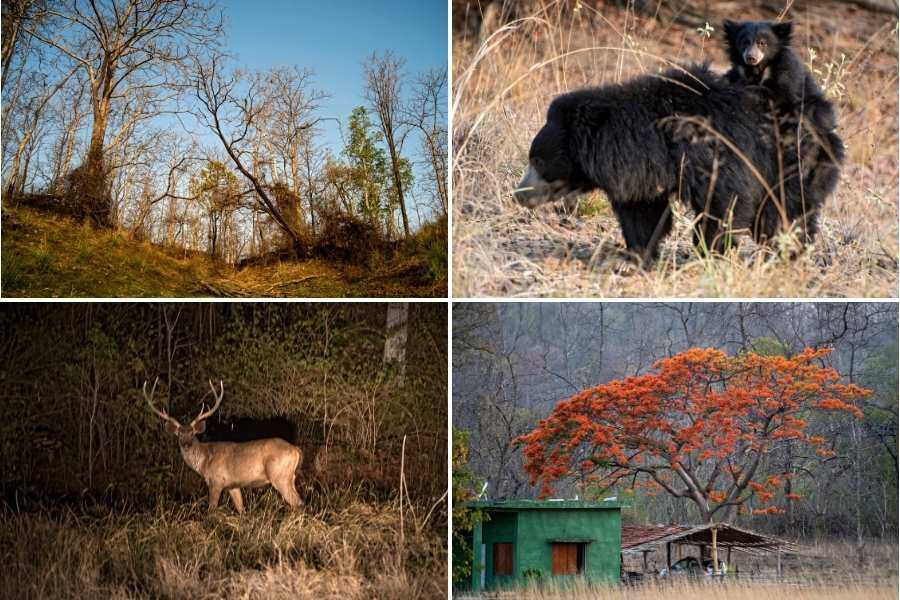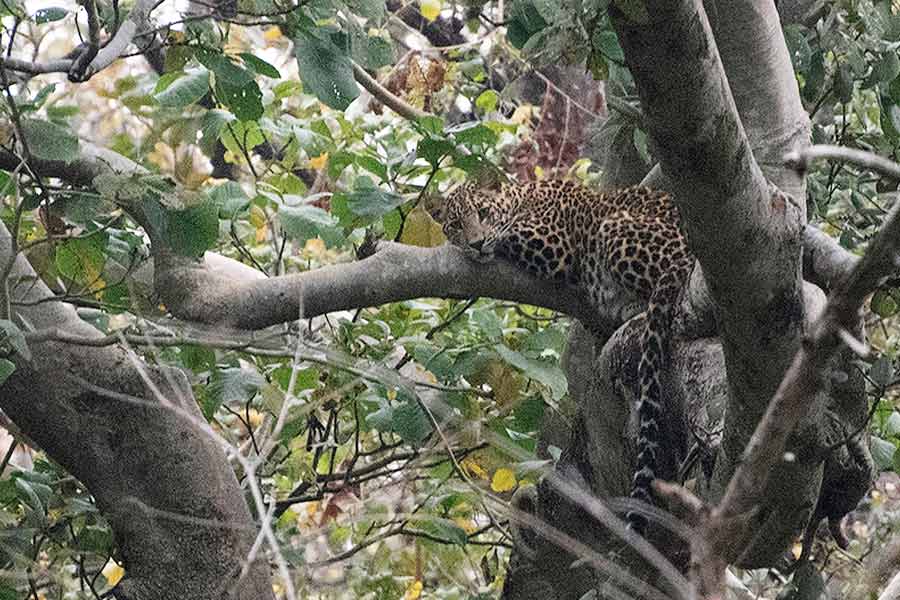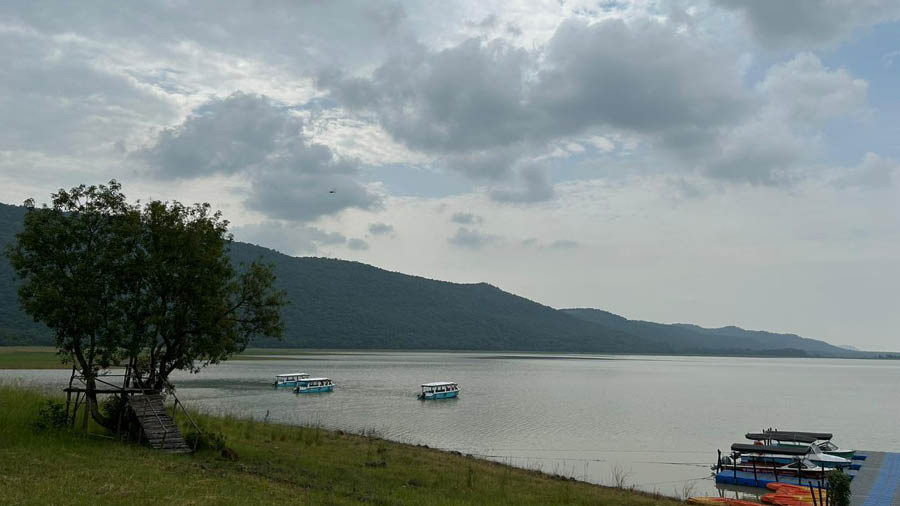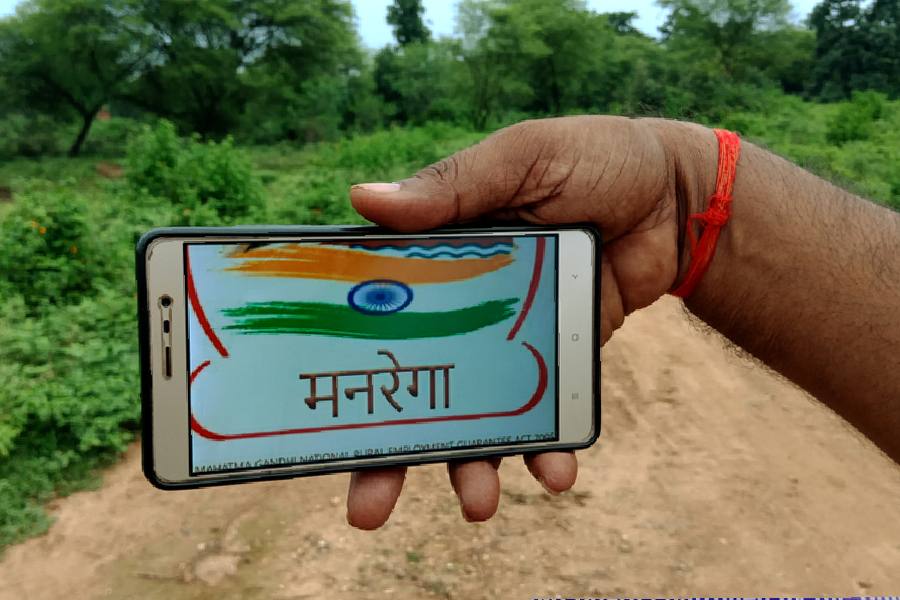It was a scorcher of a summer. The waterholes deep in the forest were drying up, and the parched denizens of the jungle loped wearily to the few that remained on the outskirts. And we, always on the lookout for a new experience, set out for Madhya Pradesh’s Satpura National Park and Tiger Reserve. Our adventure was laced with a touch of masochism as temperatures hovered between 45 and 47°C.
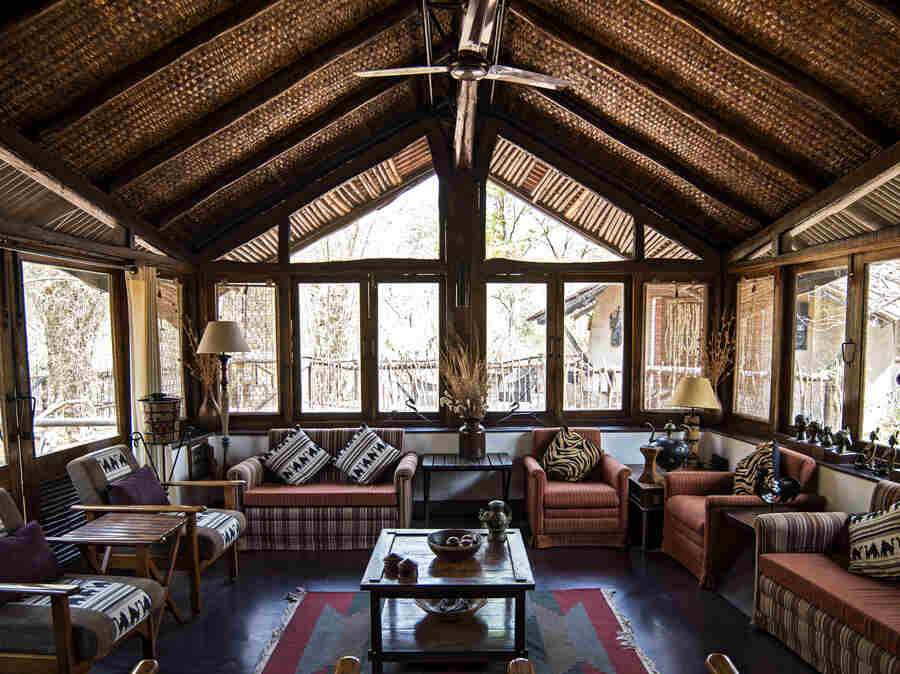
The well-appointed lounge area at the Reni Pani Jungle Lodge
We endured the heat knowing full well that wildlife sightings are the best in summer, and after a three-hour drive from Bhopal, we checked into Reni Pani Jungle Lodge. The lodge, however, had beat-the-heat options. A complex of luxurious dun-coloured cottages and tents that sprawl over 15 acres, the jungle lodge was an African fantasy in the bush, reminiscent of the luxe private game lodges in South Africa. Beyond the property, another 15 acres of wilderness unfurled. Our airconditioned tent was near a perennial waterhole where occasionally a zebra or a spotted deer would stroll up for a sip, supremely confident that they were in their own domain.
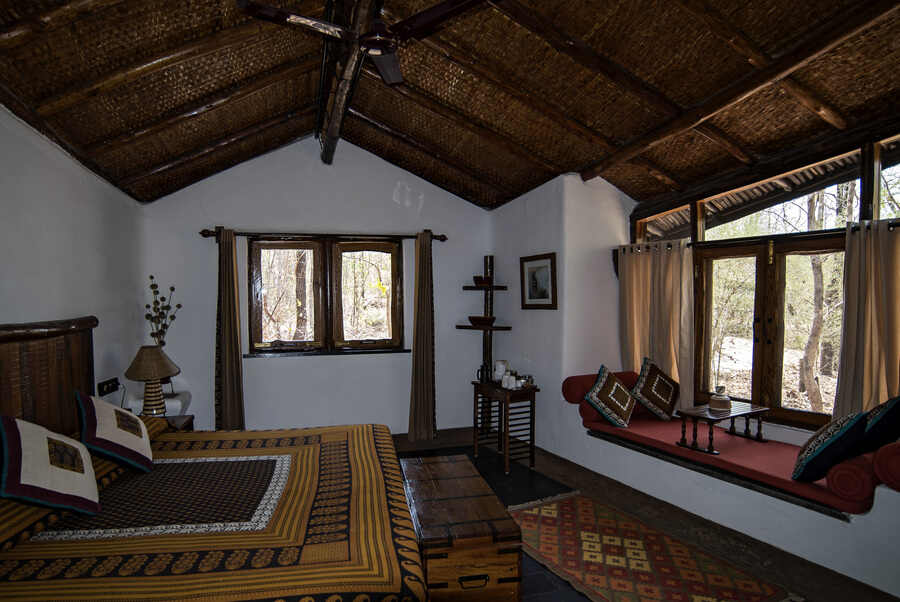
Cosy sit-outs in the tents of Reni Pani afford views of a perennial watering hole
While the great outdoors beckoned, we slowly acclimatised ourselves to the heat of the Indian summer. During the hottest part of the day, we lingered in our capacious suite-like tent, while monkeys chattered and clattered on the roof. Or we would tarry on our sit-out, which fielded views of the waterhole and the forest, making us feel like wildlife was available at our doorstep. The heat would be forgotten though at times it added a luminous sheen to our surroundings.
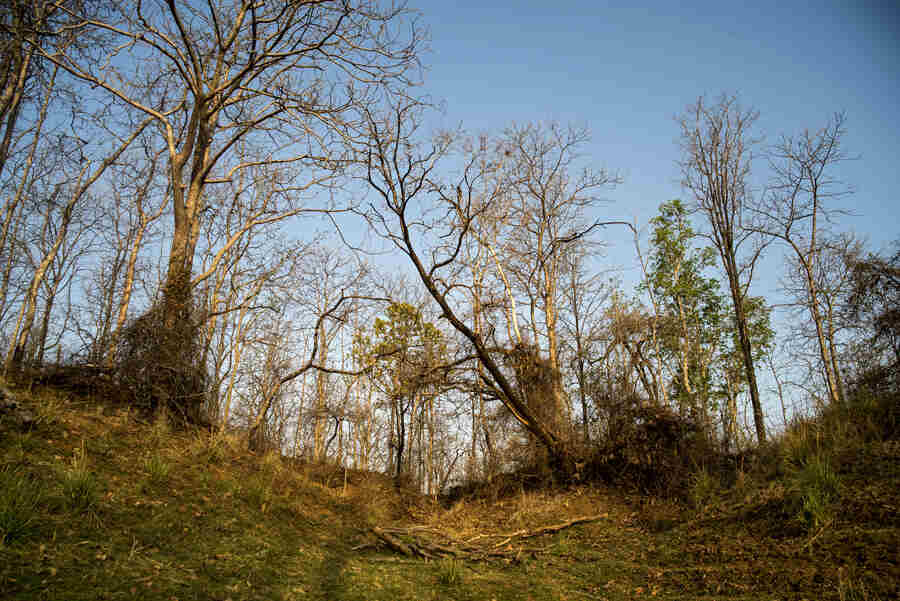
Located in the hills of the Satpura Range, the national park and tiger reserve is a mixed deciduous forest with rivers and hills
The Satpura Tiger Reserve, cradled in the Mahadeo Hills of the Satpura Range, is not as hyped as its better-known cousins, Kanha and Bandhavgarh. Indeed, Satpura has the mysterious allure of an equally breathtaking sibling. A thick mixed-deciduous jungle enhanced by hills and rivers dwarfs everything that’s human in scale.
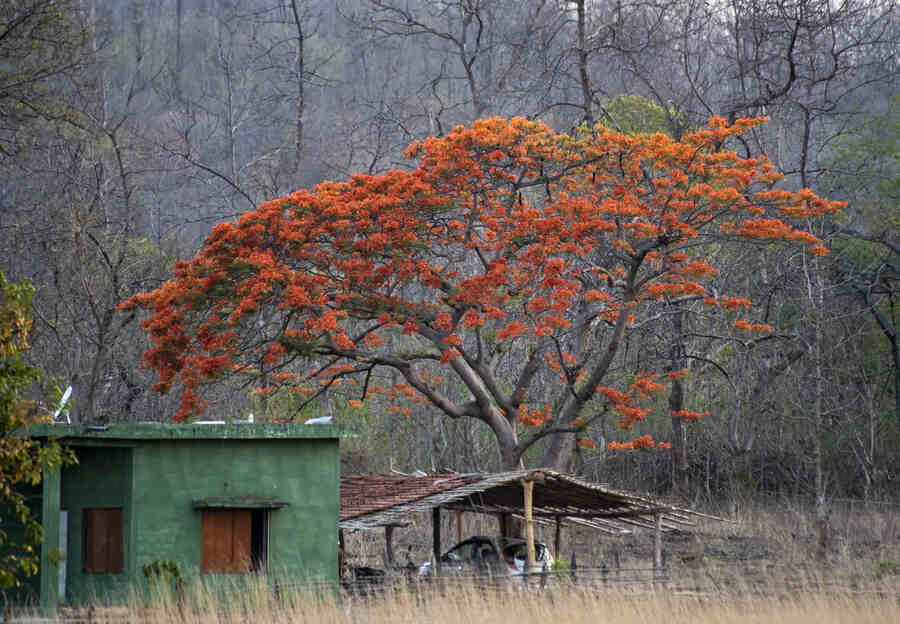
A tree in full bloom at the Forest Department outpost in the reserve
At sunset, we set off on a night patrol in the buffer zone in the park where a cool evening breeze was akin to a lover’s caress. “Tourists are the eyes and ears of the forest,” our guide explained, “and must report any unusual happenings they come across.” Both wildlife and would-be poachers were in our crosshairs as our jeep purred away on red earth trails where we hoped the big cat would be thirstily slurping away at a waterhole.

A dancing peacock spotted on an evening safari
“Though there are tigers here, don’t expect to see any. Satpura is the place for sighting sloth bears, leopards and wild dogs,” our guide informed us. The big prize eluded us that evening, but we did reap other rewards. A harem of peahens ignored the come-ons of a dancing narcissistic peacock who later seemed to decide that his own reflection in the water was far more alluring.
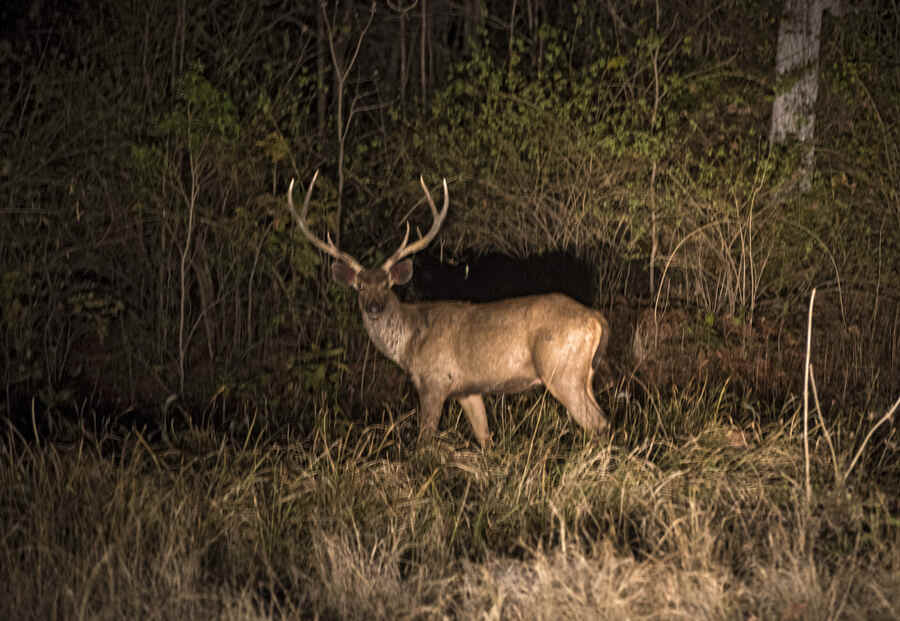
Sighting of a sambar at the watering hole during the night
Squirrels, lizards, a civet cat and a parade of beautiful plumed birds stopped by in a breezy flow at the water hole. A handsome sambar stag, too, paused for a drink.
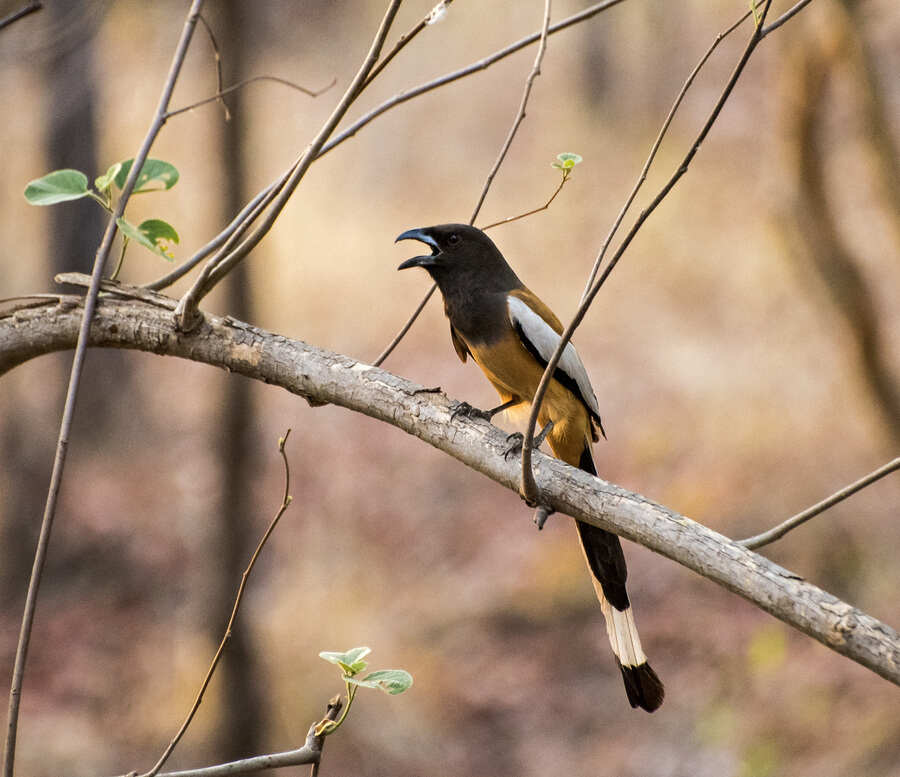
A rufous treepie pants to keep cool
The sun set, and suddenly, the forest resonated with bird song — night jars winged across the sky daubed with a post-sunset blush while other songsters concealed in the dense foliage chirped in the background. The bony branches of trees waved at us in the wind like the gnarled fingers of an ancient hand.
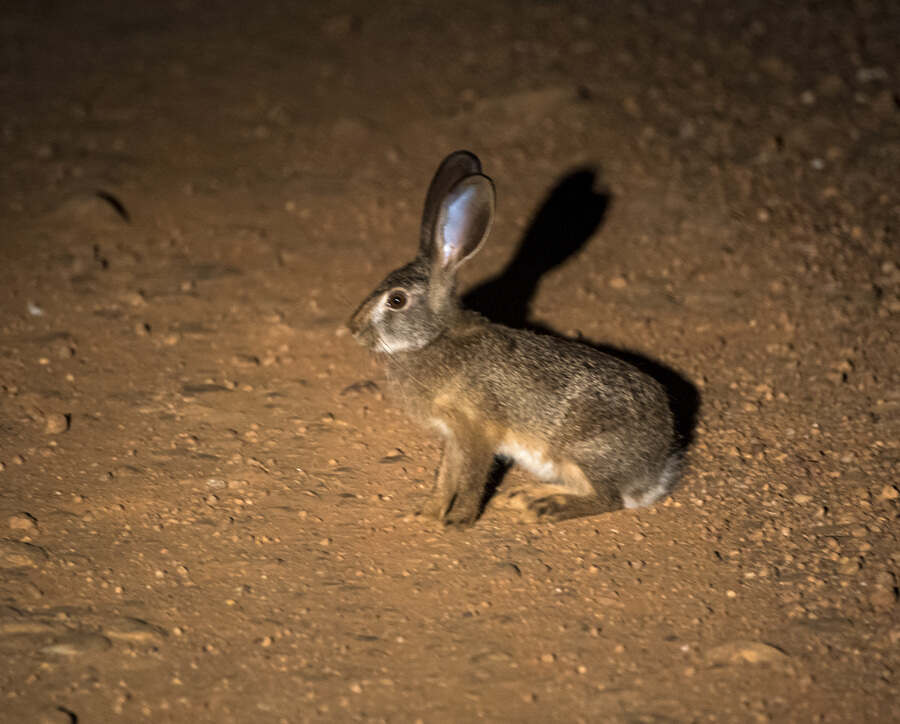
A nocturnal sighting of a baby hare
Our safari vehicle cruised through the dark jungle and the forest guard holding a spotlight swept its beam across the thicket on both sides of the dirt trail, looking for eyes that might shine like glittering gems. The forest was alive with nocturnal tumult: a grunting wild boar; a confused baby hare.
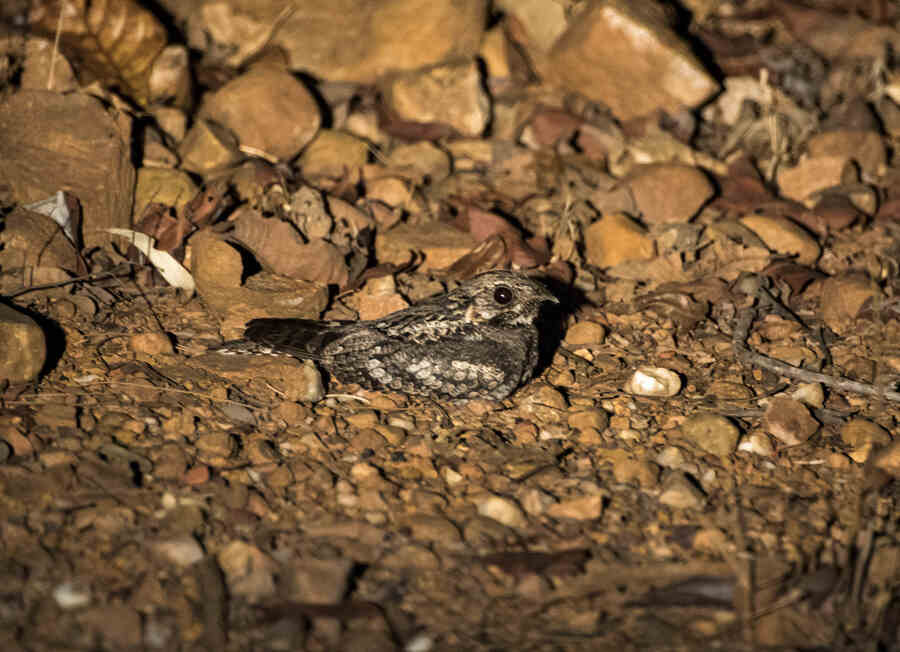
A savanna nightjar roosting on the road
A savanna nightjar roosting in the middle of the road refused to budge, compelling us to backtrack. The velvety dark and the almost complete absence of a colour palette was both unnerving and thrilling.
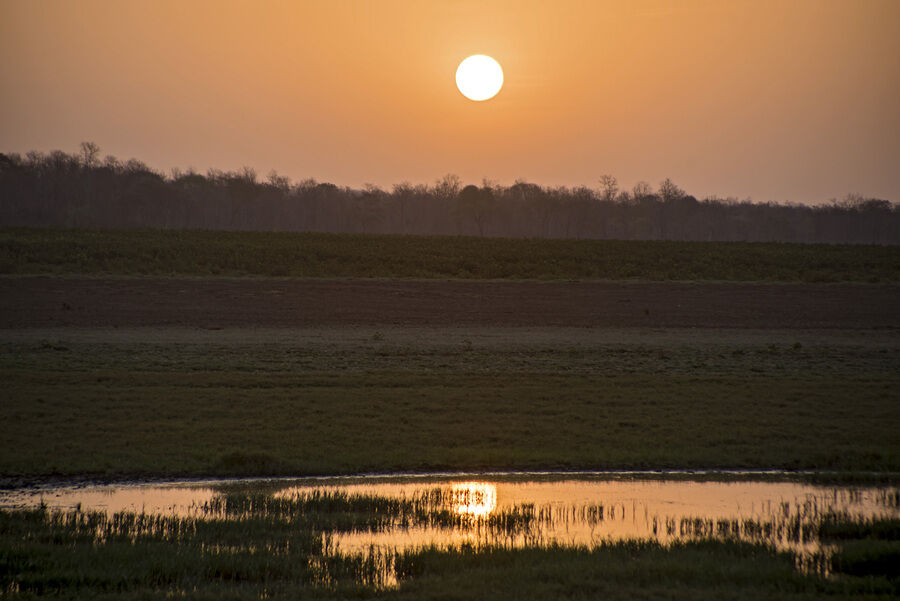
A sunrise in the forest
That night we slept in our luxury tents feeling like big game hunters but were up at the unearthly hour of four, next morning! At the park gate, we met our Forest Department guide, who carried a mean-looking stick, a blow horn and a pepper spray which, he assured us, were enough to scare any animal that might not like human intrusions in its habitat.
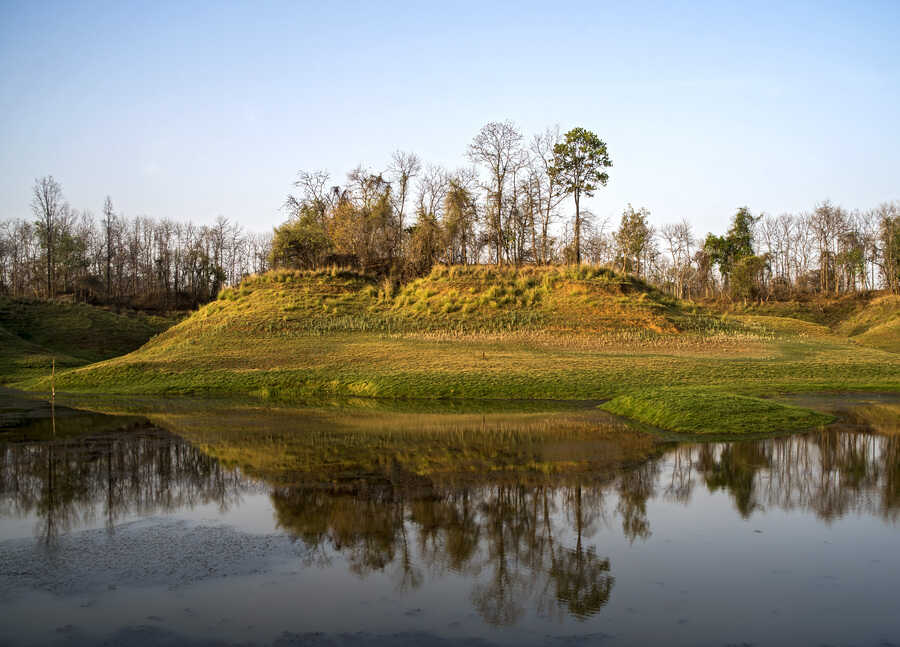
A reflection of the forest in the waters of the shrunken river
As the sun rose, we strode across the silt flats that coated the banks of a shrunken river, examining pug marks and spoor with the stealth and air of Sherlock Holmes of the wild.
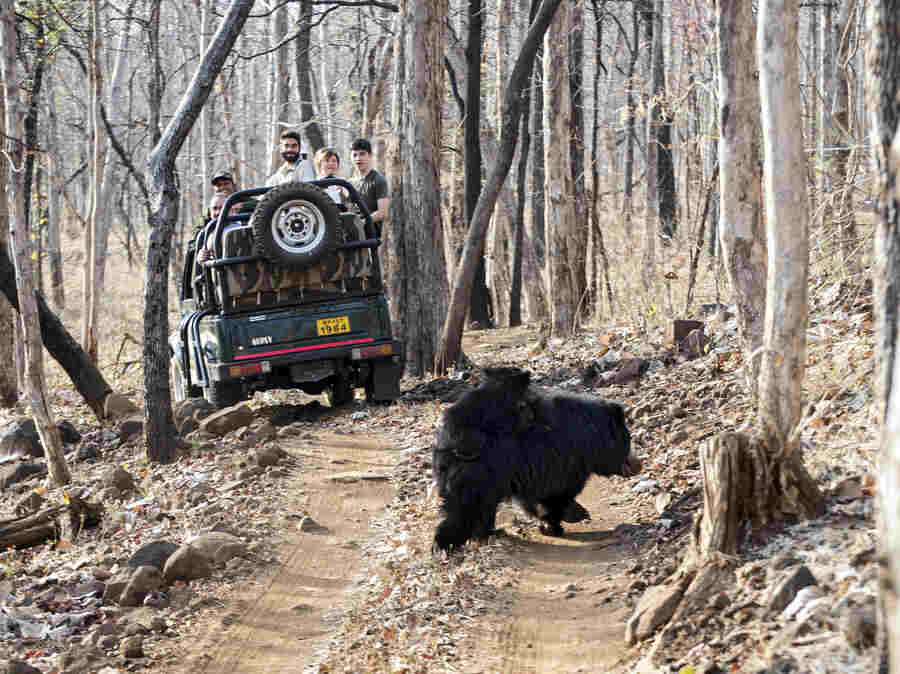
The prize sighting — a mama sloth bear with her baby
Binoculars glued to our eyes, we admired a herd of gaur munching on their grassy breakfast; painted storks sifting the water for fish, and more. In the distance we saw a black blur — a baby sloth bear riding piggy back on her mama!
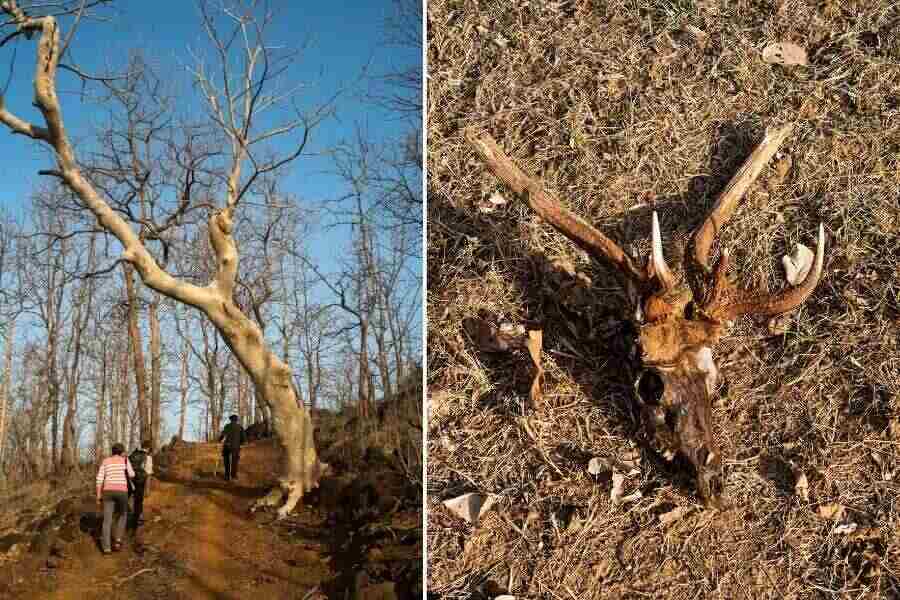
L-R: Passing by a ghost tree during a forest trek, and the remains of a spotted deer killed by a leopard
And then, we stumbled on a kill a week old! Wild dogs had felled a sambar while a group of trekkers watched the pack feast savagely on the victim. All that remained now was a bony hoof crusted with maggots.
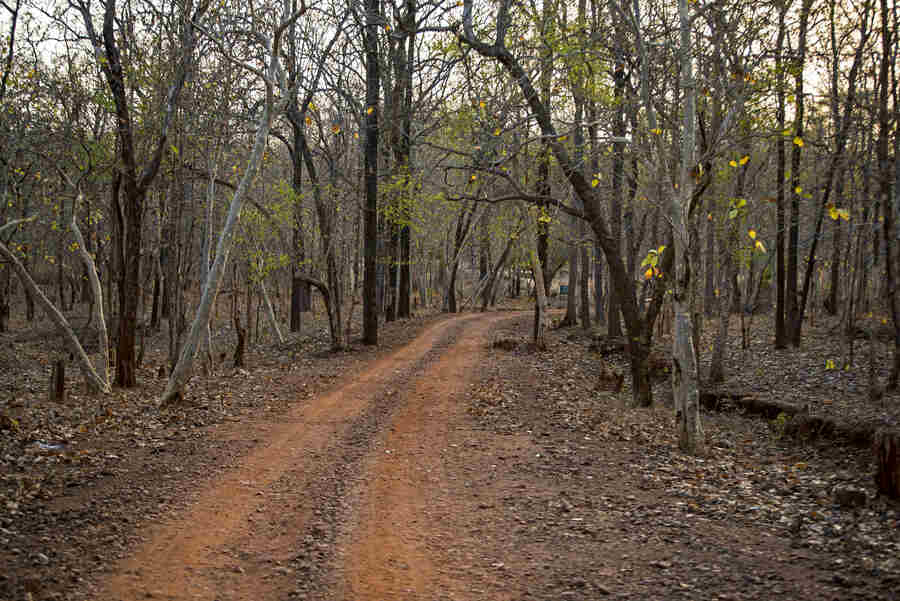
Paths of red earth through the forest
We had been on the trail which meandered through green meadows for over four hours and the temperature was starting to rise. It was time to head back to the comfort of our lodge where we were received with cold towels, refreshing iced tea and cheery smiles.

Storks flock to the shrunken river within the reserve
Travel details
- Satpura National Park and Tiger Reserve is 200km from Bhopal airport by road. The closest railway stations are Pipariya, Sohagpur and Itarsi.
- Satpura has a few upscale resorts like Reni Pani Jungle Lodge, Pench Tree Lodge, Denwa Backwater Escape, Forsyth Lodge. There are homestays close to the park, and forest rest houses as well.
- The cost of jeep safaris is Rs 13,000 per jeep upward, while the night patrol is priced at Rs 10,750 per jeep. The walking safari is pegged at Rs 4,500 per person. (Tariffs are liable to change and may vary from lodge to lodge.)
- The park opens half an hour before sunrise for morning game drives while afternoon safaris start at 3pm and stop at sunset.

